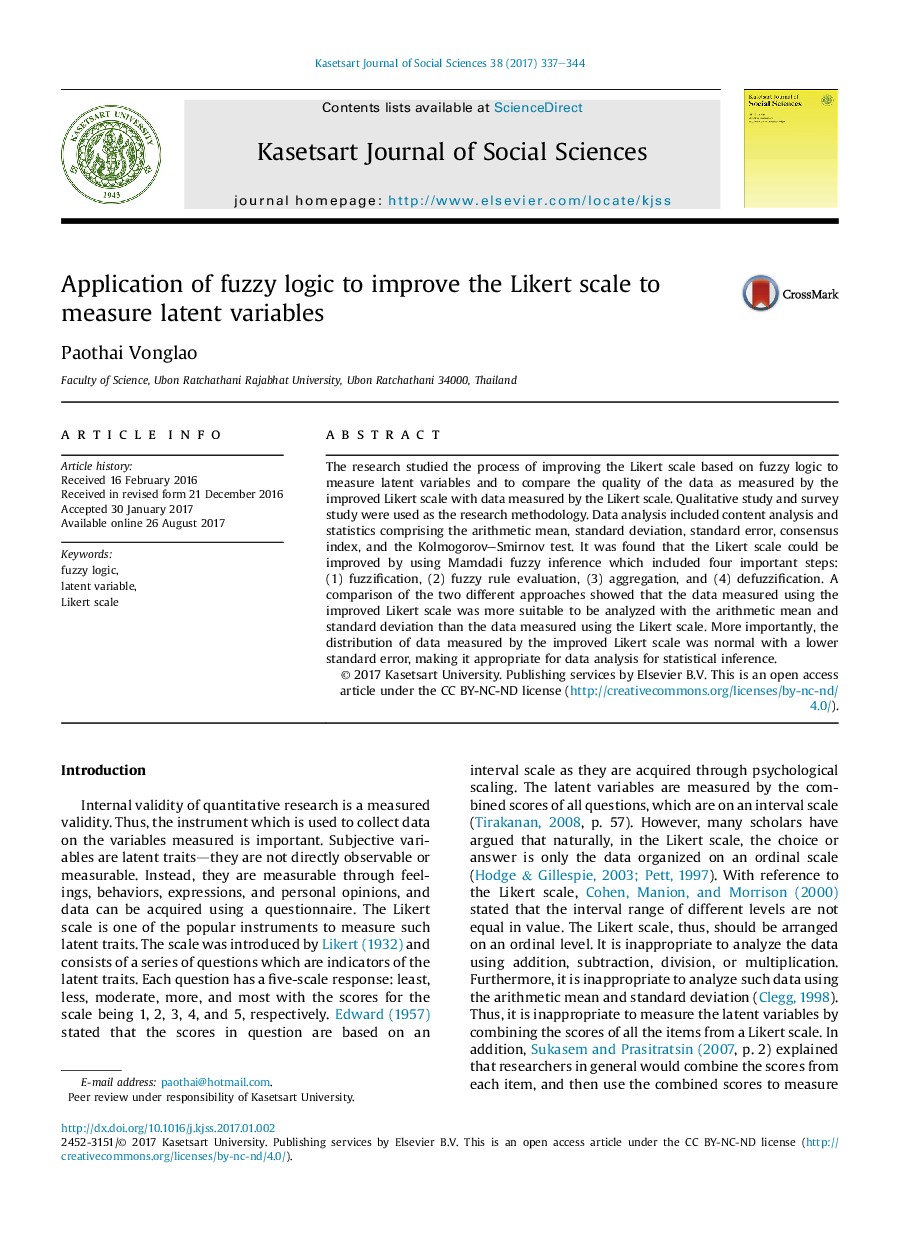| Article ID | Journal | Published Year | Pages | File Type |
|---|---|---|---|---|
| 6844042 | Kasetsart Journal of Social Sciences | 2017 | 8 Pages |
Abstract
The research studied the process of improving the Likert scale based on fuzzy logic to measure latent variables and to compare the quality of the data as measured by the improved Likert scale with data measured by the Likert scale. Qualitative study and survey study were used as the research methodology. Data analysis included content analysis and statistics comprising the arithmetic mean, standard deviation, standard error, consensus index, and the Kolmogorov-Smirnov test. It was found that the Likert scale could be improved by using Mamdadi fuzzy inference which included four important steps: (1)Â fuzzification, (2) fuzzy rule evaluation, (3) aggregation, and (4) defuzzification. A comparison of the two different approaches showed that the data measured using the improved Likert scale was more suitable to be analyzed with the arithmetic mean and standard deviation than the data measured using the Likert scale. More importantly, the distribution of data measured by the improved Likert scale was normal with a lower standard error, making it appropriate for data analysis for statistical inference.
Related Topics
Social Sciences and Humanities
Economics, Econometrics and Finance
Economics, Econometrics and Finance (General)
Authors
Paothai Vonglao,
